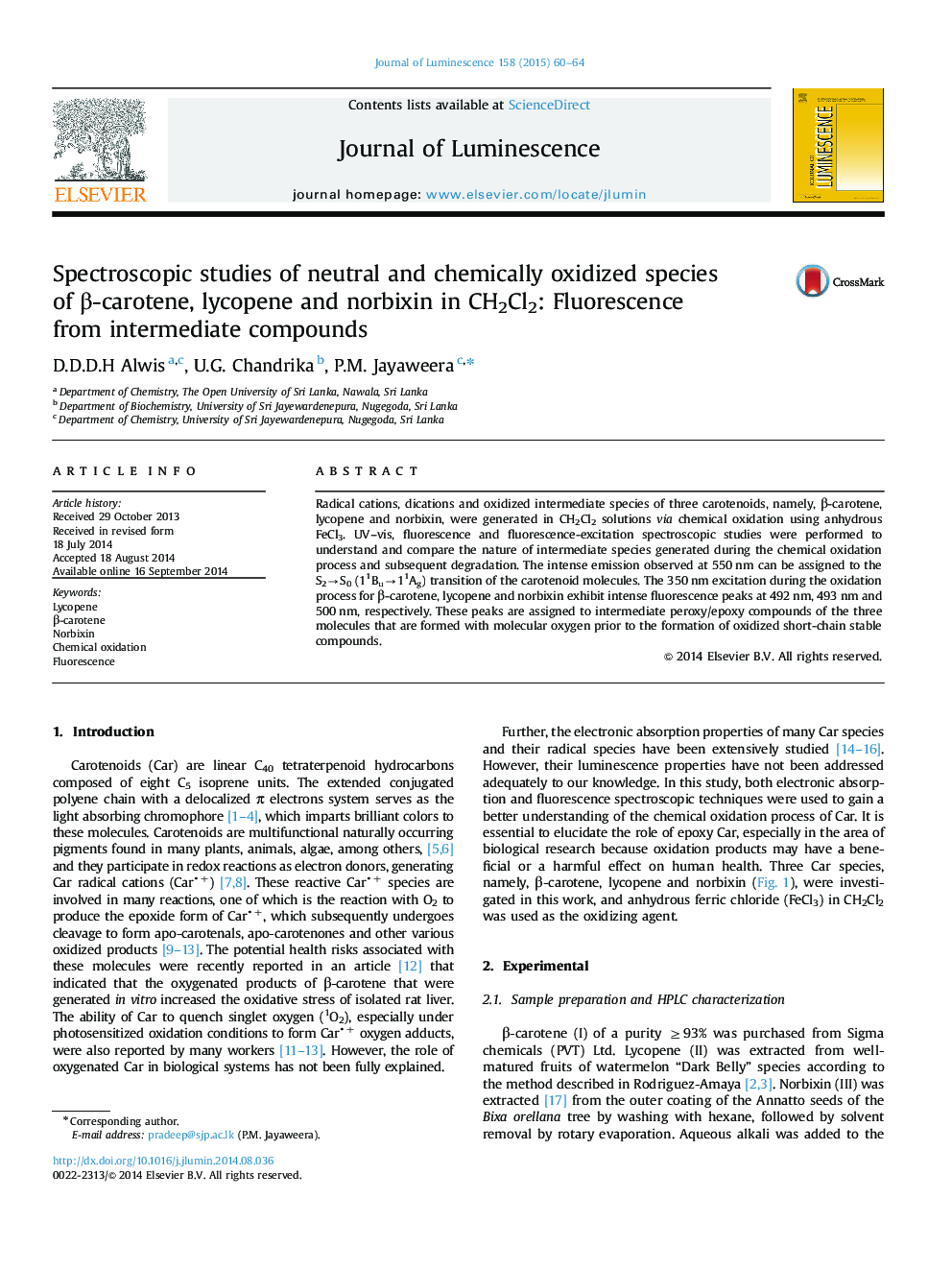| Article ID | Journal | Published Year | Pages | File Type |
|---|---|---|---|---|
| 5399928 | Journal of Luminescence | 2015 | 5 Pages |
Abstract
Radical cations, dications and oxidized intermediate species of three carotenoids, namely, β-carotene, lycopene and norbixin, were generated in CH2Cl2 solutions via chemical oxidation using anhydrous FeCl3. UV-vis, fluorescence and fluorescence-excitation spectroscopic studies were performed to understand and compare the nature of intermediate species generated during the chemical oxidation process and subsequent degradation. The intense emission observed at 550 nm can be assigned to the S2âS0 (11Buâ11Ag) transition of the carotenoid molecules. The 350 nm excitation during the oxidation process for β-carotene, lycopene and norbixin exhibit intense fluorescence peaks at 492 nm, 493 nm and 500 nm, respectively. These peaks are assigned to intermediate peroxy/epoxy compounds of the three molecules that are formed with molecular oxygen prior to the formation of oxidized short-chain stable compounds.
Related Topics
Physical Sciences and Engineering
Chemistry
Physical and Theoretical Chemistry
Authors
D.D.D.H Alwis, U.G. Chandrika, P.M. Jayaweera,
